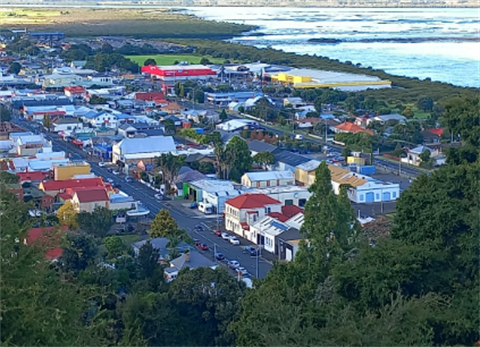Thames protection solutions identified
Published on 31 July 2024

Work to protect Thames from coastal flooding and future effects of sea-level rise continues to progress, with stopbanks confirmed as the preferred option for the town’s foreshore.
The protection of Thames is a high priority for our district, after the Shoreline Management project showed that $1billion in assets in the township are at risk over the long-term from hazards associated with sea-level rise.
A public meeting held in June 2024 presented various concept designs for protection against a half metre of sea-level rise, and a one in one-hundred-year storm. This level of storm is becoming more frequent along our coastline, and puts Thames at significant risk of flooding.
After taking on board public feedback from the meeting, the project’s governance team confirmed stopbanks will be constructed where space allows along the Thames foreshore. The stopbanks will generally follow the existing footpath, with an expected height increase of approximately 1.4 metres. In narrow areas with limited space, for example behind Pak’n’Save, a wall or sheet-pile solution will be required.
“Everyone involved in the project is also keen to explore additional nature-based solutions that will offer another layer of protection to our town,” said Project Lead, Amon Martin. “These solutions include things like shell banks, oyster islands and chenier ridges, which could bring a range of benefits, including as habitats for birds.”
Meanwhile, Richmond Villas Retirement Village has proposed partnering with our Council to deliver the section of stopbank protection associated with its property. The proposed partnership includes Richmond Villas leading the engineering, design and construction process, and covering all associated costs. It’s hoped construction on this section can begin early next year.
A workshop on project progress will be held in August 2024 for Councillors. This will be followed by a public meeting. The meeting will provide an update on project work to understand fluvial, or river, hazards and risks to Thames. The project team also expects to have more information to share on the costs associated with protection construction.
To review the basis for design of the protection structure (including design heights and staging approach) visit the Thames Protection and Resilience page on our website or email Karen.Moffatt-McLeod@tcdc.govt.nz